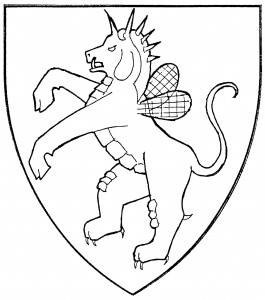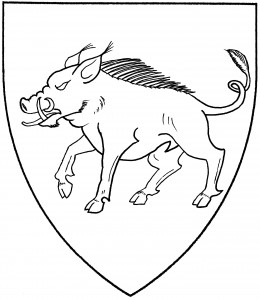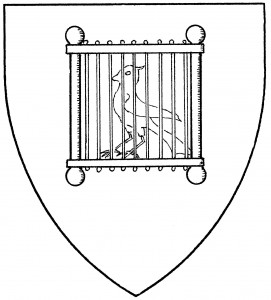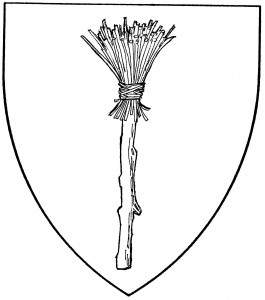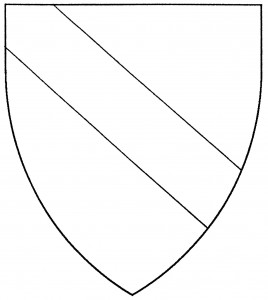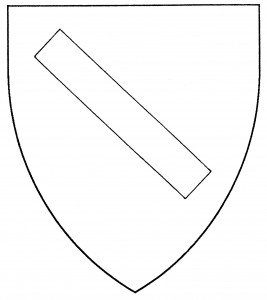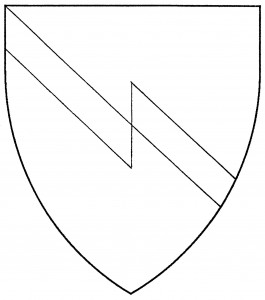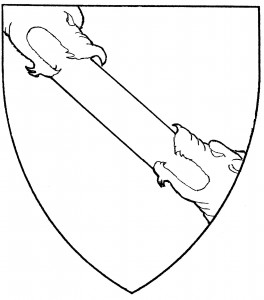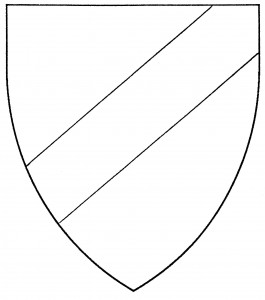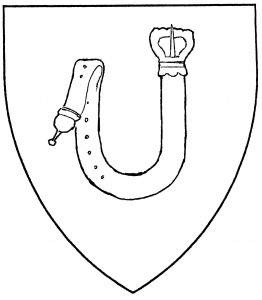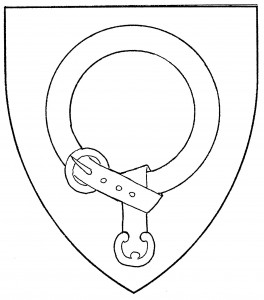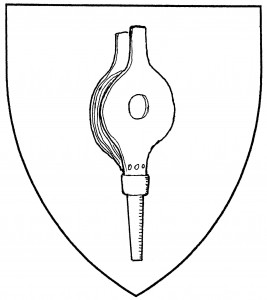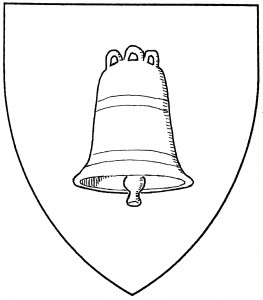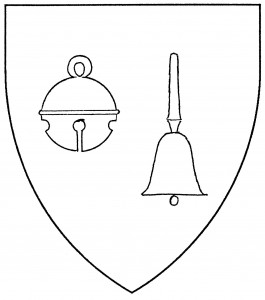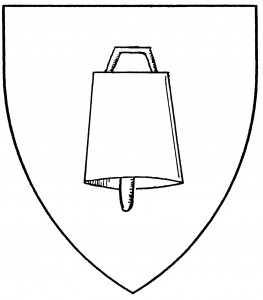Birds in Society heraldry follow most of the conventions as those of mundane heraldry. As a rule of thumb, most birds are statant close by default.
There are some bird postures unique to Society heraldry. A bird “stooping” is volant to dexter base, with the body bendwise sinister and the wings addorsed and swept back. A bird “striking” has its wings elevated and addorsed, its head lowered, and its talons extended; for purposes of difference, it is indistinguishable from a bird rising. A bird “migrant” or “migratory” is tergiant, wings displayed or displayed inverted, head erect; with no other qualification, a bird is migrant to chief. The posture is no longer allowed, pending period examples.
Any bird known to period Europeans may be used in Society armory – though, if the bird is not itself European, its use may be considered a step from period practice. (An exception is made for non-European birds actually used in period European armory. The turkeycock is perhaps the prime example of this.) The unmodified term “bird” can be used in blazon to refer to a generic bird, vaguely pigeon-shaped; it will conflict with all “standard” birds, as classified below.
In terms of difference between birds, as of this writing the Society’s policy classes every bird into one of four categories: crane-shaped (e.g., cranes, storks, herons), swan-shaped (e.g., swans, geese, ducks), poultry-shaped (e.g., chickens, quail, peacocks), and “standard bird” (e.g., corbies, doves, raptors). (One might assume a fifth category, “other”, to cover anomalies such as the ostrich.) Birds from different categories, when in period postures for those birds, will usually be considered completely different for purposes of conflict.
For specific birds, see: cock, crane, crow, dove, eagle, falcon, firebird, goose, hummingbird, martlet, moorcock, ostrich, owl, peacock, pelican, penguin, popinjay, roc, sea-mew, simurgh, swallow, swan, turkeycock, vulture.
Grim Finch bears: Argent, a bend per bend sable and azure, in chief a finch volant, wings addorsed azure.
Eleanor of Pica bears: Vert, a magpie proper maintaining in its dexter talon a feather argent.
Linnet of Liddington bears: Quarterly azure and Or, four linnets counterchanged.
Luke Aucher bears: Argent, a great auk close sable and a chief rayonny gules.
Robin Vinehall the Ambivalent bears: Or, in fess two robins close addorsed, tails crossed in saltire proper.
Wilhelmina Brant bears: Or, two pheasants respectant and in chief three garden roses slipped vert.
Božena z Prahy bears: Gules, a pigeon between flaunches argent.
